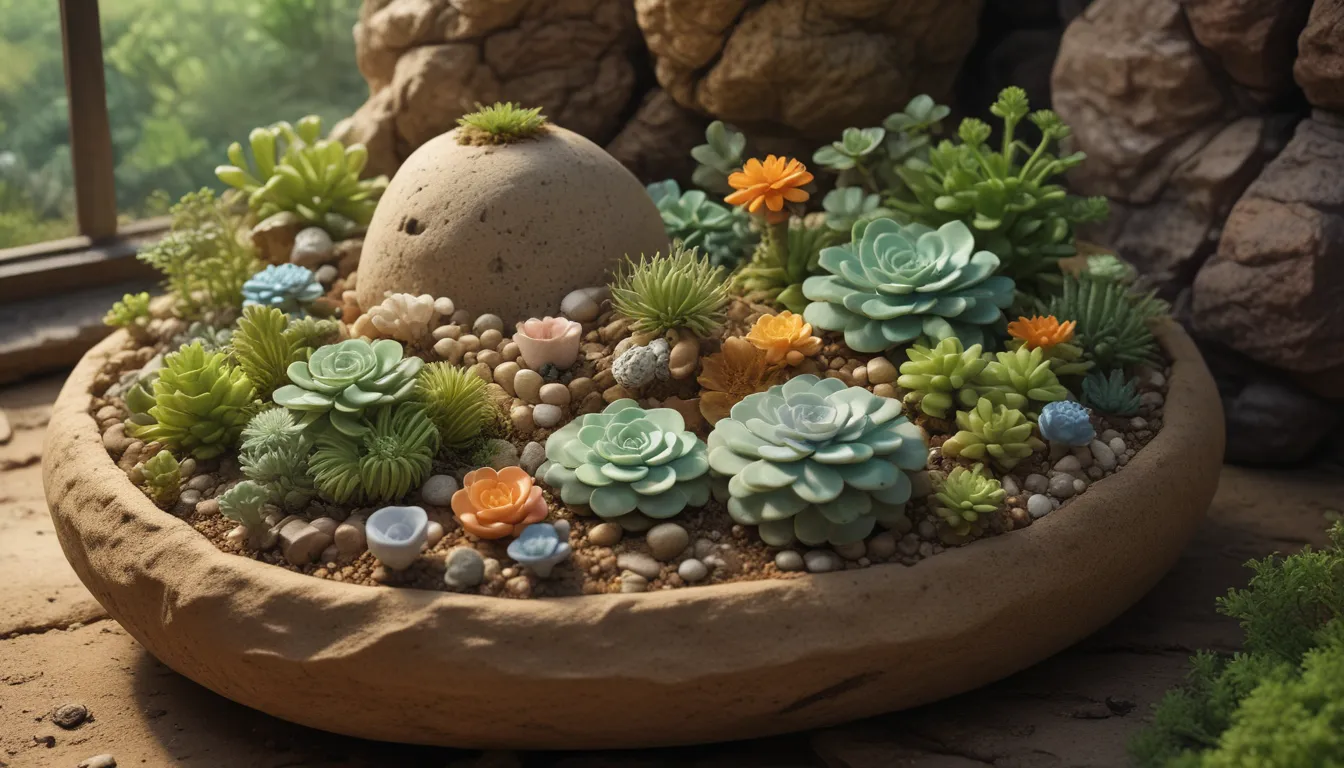The Enchanting World of Growing and Nurturing Lithops Living Stone Plants

If you’ve ever wished for a pet rock, hold onto your hat – we’re talking about living stones, also known as lithops succulent plants!
Lithops are masters of mimicry, seamlessly blending into their rocky, gravelly surroundings with their muted colors. These quirky plants have even quirkier care routines, making them a unique addition to your collection of houseplants.
Before you jump into bringing home a living stone, take a moment to understand what caring for these tiny treasures entails. Let’s dive into the fascinating world of growing and caring for lithops, step by step.
What You’ll Learn
Bring home valuable insights on how to cultivate and nurture these remarkable living stones. Here’s a quick overview of what we’ll explore:
- What Are Lithops?
- Lithops Anatomy and Markings
- Cultivation and History
- Propagation
- How to Grow
- Growing Tips
- Maintenance
- Species and Varieties to Select
- Managing Pests and Disease
- Best Uses
- Quick Reference Growing Guide
What Are Lithops?
If you ask a child to draw a plant, they’ll likely sketch a stem with big green leaves. However, lithops couldn’t be further from this conventional image – most living stones aren’t even green!
Lithops’ unique characteristic is their mimicry of stones, with muted colors that help them blend seamlessly into their rocky habitats. These succulents hide away from hungry animals seeking leafy greens and protect themselves from harsh climates by predominantly growing underground.
Lithops Anatomy and Markings
Lithops have peculiar anatomical features that set them apart:
Bodies or Heads
- Bodies consist of two fused leaves, shaped like hearts, double wedges, or inverted cones.
- Vary in sizes and can be elongated or compact.
- Individuals can display one head or multiple clumps.
Lobes and Faces
- Bodies are made up of two thick, fused lobes.
- Lobes vary in size and symmetry.
- Faces can have different shapes, textures, and markings.
Fissures and Molting
- The fissure between the leaves produces flowers and new leaves.
- Molting is shedding old leaves to make way for new growth.
Flowers
- Lithops produce a single flower facing upwards.
- Flowers come in shades of yellow, white, bronze, or pink.
Windows
- Translucent window-like structures allow light for photosynthesis.
- Vary in size, shape, and opacity.
Islands and Peninsulas
- Islands and peninsulas on faces mimic water bodies protruding from land.
Margins and Shoulders
- Bands of color and borders around faces.
Channels
- Window parts obscured by markings are known as channels.
Dusky Dots
- Indented or raised dots on faces.
Rubrications
- Dark reddish patterns on faces.
Understanding lithops’ complex markings brings appreciation for the diverse species, subspecies, and cultivars.
Cultivation and History
Originating from southern Africa, lithops thrive in dry, rocky habitats with minimal rainfall. Evolved to endure extreme temperatures, these succulents belong to the fig marigold family, embracing their unique adaptations.
With 37 species, lithops offer a range of colors, sizes, and patterns. Proper cultivation and conservation efforts are essential in preserving these miniature marvels amidst habitat loss and poaching threats.
Lithops Propagation
Whether from seeds or plant division, propagating lithops is a breeze:
From Seed
- Sow lithops seeds in well-draining mix.
- Provide warmth and indirect light for germination.
- Gradually adjust seedlings to ambient conditions.
From Division
- Divide multi-headed plants during the dormancy period.
- Repot divided plants into suitable growing mix.
How to Grow Lithops
Mastering the art of lithops care requires mindful watering and optimal sunlight exposure:
Sun
- Lithops thrive in direct sun for 4-5 hours daily.
- Gradually acclimate plants to increased sunlight.
Climate
- Tolerant of a wide temperature range and low humidity.
- Well-ventilated, sunny locations are ideal.
Water
- Adjust watering frequency based on growing season.
- Underwatering is preferred over overwatering.
Soil
- Mimic lithops’ native gritty, rocky soil with a well-draining mix.
- Avoid water-retentive mediums to prevent root rot.
Growing Tips
- Provide sufficient sunlight.
- Maintain season-specific watering schedules.
- Use a gritty soil mix for optimal drainage.
Maintenance
An understanding of lithops’ seasonal needs enhances their longevity:
Mulch
- Use gravel or coarse sand mulch to aid drainage and stability.
Fertilizing
- Minimal fertilization is needed due to natural adaptation.
Repotting
- Repot multi-headed plants every 2 years for optimal growth.
Encouraging Flowering
- Ensure adequate sunlight for enhanced blooming.
Saving Seeds
- Cross-pollination and seed storage ensure future propagation.
Lithops Species and Varieties to Select
Explore a myriad of lithops species, cultivars, and color variations for a diverse collection:
- Karasmontana: Diverse colors and characteristics, ideal for multi-headed displays.
- Otzeniana: Olive-green hues with pronounced markings and yellow flowers.
- Rubra: Pink to reddish cultivar with smooth faces and distinct patterns.
Managing Pests and Disease
Prevent pests and rot by maintaining proper care practices and vigilance:
- Monitor for common pests like mealybugs and spider mites.
- Prevent water-related diseases with well-drained soil and minimal watering.
Best Uses for Lithops
Versatile lithops deserve a spot in your plant collection or outdoor garden:
- Ideal for windowsills, succulent gardens, or rock garden displays.
- Suited for mixed succulent planters or succulent-themed fairy gardens.
Conclusion: Embrace the Living Stone Experience
Lithops transform plant care into an art form, blending unique aesthetics with mindful cultivation practices. From their captivating markings to seasonal needs, caring for lithops is an enriching journey into the world of succulent conservation.
Celebrate the resilient spirit of lithops by nurturing these miniature marvels with optimal sunlight, mindful watering, and well-draining soil. Embrace their unique anatomy, propagate with care, and marvel at their diverse species and cultivars as you craft your lithops collection.
Seize the opportunity to connect with these “living stones,” and discover the joy of cultivating nature’s hidden gems within your indoor or outdoor spaces. Engage with lithops’ intricate patterns, seasonal care routines, and diverse varieties to embark on an enchanting journey of succulent cultivation.
Unleash your fascination for lithops, and witness the magic of these “living stones” flourish under your nurturing care. Embrace the lithops experience, and revel in the miniature wonders of nature thriving in your living spaces!





